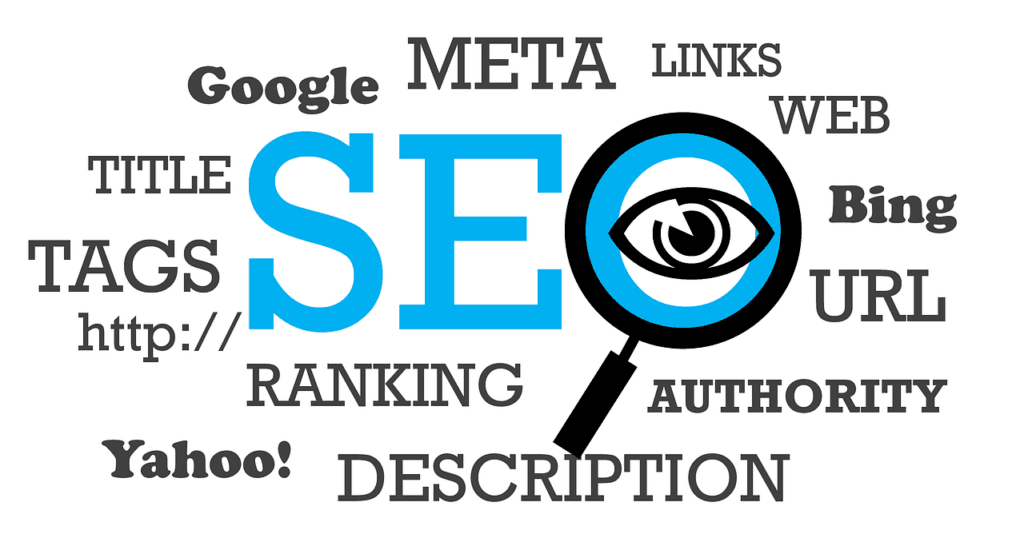Benefits of E-commerce Marketing
E-commerce marketing provides numerous advantages that can help online retailers thrive in a competitive landscape. Understanding these benefits is crucial for e-commerce business owners, CMOs, and online retailers aiming to increase website traffic, conversions, and revenue.
Cost-Effectiveness
E-commerce marketing is often more cost-effective compared to traditional methods like TV, radio, or print media. Businesses have access to affordable marketing channels such as social media advertising, SEO, email marketing, and influencer partnerships. This cost efficiency allows companies to maximize their marketing budgets while still generating substantial returns on investment (Wbcom Designs).
Cost Comparison: E-commerce Marketing vs. Traditional Marketing
| Marketing Method | Typical Cost Range |
|---|---|
| E-commerce (Social Media Ads) | $0.50 – $4.00 per click |
| E-commerce (Email Marketing) | $0.10 – $0.50 per email sent |
| Traditional (TV Ads) | $1,000 – $100,000+ per spot |
| Traditional (Print Ads) | $300 – $15,000+ per ad |
Global Audience Reach
One of the biggest advantages of e-commerce marketing is the ability to reach a global audience. This allows businesses to expand their reach and tap into new markets both domestically and internationally. By leveraging the internet, even small online retailers can attract customers from various countries, significantly enhancing their market potential (Wbcom Designs).
Key Markets for E-commerce Growth
| Region | Growth Rate (2023) |
|---|---|
| North America | 14% |
| Europe | 12% |
| Asia-Pacific | 20% |
| Latin America | 15% |
Scalability
A significant advantage of e-commerce is the ability to achieve scalability. Online stores can grow in tandem with the business without the need to invest heavily in moving to a larger physical space. E-commerce platforms can easily accommodate increased traffic and product offerings, making it easier for businesses to expand operations without logistical challenges (Mailchimp).
| Scalability Benefits | Description |
|---|---|
| Increased Inventory | Easily add more products as demand increases |
| Traffic Management | Handle increased visitors efficiently with robust platforms |
| Cost Control | Avoid heavy investments in physical space for expansion |
Logistics Tracking
Keeping track of logistics is simplified in e-commerce compared to physical storefronts. Businesses can easily outsource fulfillment logistics for services like 2-day shipping and returns processing. Electronic records help track sales and patterns, allowing companies to optimize their inventory and order fulfillment processes (Mailchimp).
| Logistics Advantages | Description |
|---|---|
| Real-time Tracking | Monitor shipments and stock levels instantly |
| Simplified Returns | Automate return processes for efficiency |
| Data Analysis | Use sales data to inform inventory decisions |
Understanding these benefits is essential for developing effective e-commerce marketing strategies and maximizing the potential of e-commerce content marketing.
Importance of Content Marketing in E-commerce
Content marketing plays a vital role in the e-commerce landscape, enabling businesses to attract and retain customers while driving conversions and revenue. This section delves into the definition of content marketing, explores the types of content relevant for e-commerce, and highlights the critical role that content plays in e-commerce marketing strategies.
Definition of Content Marketing
Content marketing is defined as a strategic approach focused on the creation, publication, and circulation of valuable content designed to spark and maintain interest among potential business clients or partners (Abstrakt Marketing Group). It goes beyond mere promotion; instead, it aims to inform, educate, and engage the target audience, ultimately building a relationship of trust and loyalty.
In the context of e-commerce, content marketing involves the use of various content types that resonate with potential customers, enhancing the shopping experience and influencing purchase decisions.
Types of Content in E-commerce
Several types of content are utilized in e-commerce marketing, each serving distinct purposes. Below is a table outlining common content types along with their purposes:
| Content Type | Purpose |
|---|---|
| Blog Posts | Inform and educate customers, improve SEO |
| Videos | Demonstrate product features and usage |
| Infographics | Visually represent information and data |
| Product Descriptions | Provide detailed information about products |
| Case Studies | Showcase success stories and customer satisfaction |
| Social Media Posts | Engage with customers and build community |
These different content formats can help e-commerce businesses effectively communicate their brand message and connect with their audience.
Role of Content in E-commerce Marketing
Content plays several crucial roles in e-commerce marketing:
Attracting Traffic: Quality content can improve search engine rankings, making it easier for potential customers to find a business online. Implementing effective e-commerce SEO strategies is essential for enhancing visibility.
Engaging Customers: Valuable content that informs and entertains keeps customers engaged, encouraging longer site visits and increasing the likelihood of conversion.
Building Trust: Publishing trustworthy and informative content positions a brand as an authority in its industry. This trust is fundamental in converting leads into customers as well as fostering repeat business.
Driving Conversions: Well-crafted content can be persuasive, guiding potential customers through the sales funnel and encouraging them to make purchases. Integrating content marketing with e-commerce conversion rate optimization can significantly boost sales.
Supporting Other Marketing Efforts: Content marketing can enhance other strategies, such as e-commerce email marketing and social media campaigns, by providing relevant information that resonates with customers.
By focusing on e-commerce content marketing, businesses can create a comprehensive strategy that not only encourages sales but also fosters long-term relationships with their customers. Strategies like e-commerce marketing automation and e-commerce influencer marketing can further enhance the effectiveness of content-driven campaigns.
Enhancing E-commerce Visibility with SEO
Search Engine Optimization (SEO) plays a pivotal role in enhancing the online visibility of e-commerce websites. By effectively optimizing a site for search engines, e-commerce sites can attract a significant amount of organic traffic.
SEO Basics for E-commerce
SEO involves preparing a website, planting the right keywords, and continuously optimizing it to appear prominently in search engine result pages (SERPs) like Google and Bing (Abstrakt Marketing Group). The primary aim of SEO is to improve a site’s ranking on search engines, which can lead to increased visibility and higher conversion rates.
Key components of SEO for e-commerce include:
| Component | Description |
|---|---|
| Keyword Research | Identifying relevant keywords that potential customers are searching for. |
| On-page Optimization | Enhancing individual web pages to rank higher in SERPs using relevant content and markup. |
| Off-page Optimization | Building links and establishing authority by promoting the site’s content across other platforms. |
| Technical SEO | Ensuring the website is structured correctly for indexing and crawling by search engines. |
On-page SEO Strategies
On-page SEO focuses on quality content embedded with relevant keywords. This includes optimizing product descriptions, compelling meta descriptions, and useful subheadings to boost a website’s search engine rankings (Abstrakt Marketing Group). Here are some essential strategies for improving on-page SEO:
- Keyword Optimization: Include relevant keywords in titles, headings, and throughout the content.
- Compelling Meta Descriptions: Craft descriptive and engaging meta descriptions to improve click-through rates.
- Quality Content: Create valuable content that answers potential customer queries and encourages engagement.
- User-Friendly URLs: Ensure URLs are clean and include target keywords.
- Image Optimization: Use alt text for images to enhance search visibility and accessibility.
Off-page SEO Techniques
Off-page SEO involves building a network of links from reputable sites back to your e-commerce website. This strategy is essential for enhancing authority and attracting traffic. Key techniques include:
- Link Building: Acquire backlinks through guest posting, partnerships, and collaborations.
- Social Media Sharing: Actively promote content on social media platforms to generate traffic and engagement.
- Influencer Partnerships: Collaborate with influencers to share products and content, expanding reach and credibility.
- Online Reviews: Encourage customers to leave reviews on external sites to boost reputation and SEO.
Implementing these strategies effectively can significantly enhance the visibility of e-commerce websites. Along with SEO, combining these efforts with other essential marketing elements, such as e-commerce email marketing and e-commerce marketing tools, can further increase traffic and conversions.
Leveraging SEO for E-commerce Success
Successful e-commerce businesses understand the importance of leveraging SEO to enhance their online presence. This process involves several critical practices that can maximize visibility and drive conversions.
Keyword Optimization
Keyword optimization is essential for e-commerce websites, as it enables them to attract visitors actively searching for specific products or services. By incorporating targeted keywords into their content, e-commerce sites can improve their chances of ranking higher in search engine results pages (SERPs). This strategic approach not only increases visibility but also enhances the likelihood of converting visitors into paying customers (LinkedIn).
A keyword optimization strategy typically involves the following steps:
| Step | Description |
|---|---|
| Research | Identifying relevant keywords with high search volume and low competition. Utilize tools like Google Keyword Planner or SEMrush. |
| Implementation | Strategically inserting keywords into product descriptions, meta titles, heading tags, and image alt texts. |
| Monitoring | Using analytics tools to track keyword performance and adjust the strategy as needed. |
Building Credibility through SEO
SEO plays a pivotal role in establishing credibility and authority for e-commerce websites. High search rankings can convey trust to potential customers and associate the website with quality and reliability. As e-commerce sites improve their visibility through SEO practices, they simultaneously build brand reputation.
Key components of building credibility include:
| Component | Importance |
|---|---|
| Quality Content | Creating informative, engaging, and relevant content that resonates with users. |
| Backlinking | Acquiring high-quality backlinks from reputable sources to boost domain authority. |
| User Experience | Ensuring a seamless website experience with fast loading times and responsive design. |
Cost-Effectiveness of SEO
Compared to many other forms of digital marketing, SEO is cost-effective in the long run for e-commerce businesses. It provides sustainable results and a higher return on investment (ROI) over time (LinkedIn). E-commerce owners can benefit from the following cost-effective features of SEO:
| Feature | Benefit |
|---|---|
| Organic Traffic | Attracting visitors without ongoing advertising costs. |
| Long-term Results | Maintaining rankings can result in continuous traffic without additional expenses. |
| Data Insights | Utilizing tracking and analytics tools to gather data on user behavior, allowing for refined marketing strategies. |
By focusing on keyword optimization, establishing credibility, and recognizing the cost-effectiveness of SEO, e-commerce businesses can effectively enhance their online visibility and overall success. For more insights into optimizing e-commerce strategies, check out our articles on e-commerce marketing strategies and e-commerce conversion rate optimization.
Crafting Innovative E-commerce Marketing Campaigns
Creating powerful e-commerce marketing campaigns requires a blend of research, strategy, and community engagement. The following sections outline the essential components involved in crafting effective campaigns.
Market Research & Analysis
The foundation of any successful e-commerce campaign starts with thorough market research and the analysis of customer feedback. This process enables businesses to align their campaign goals with the needs and preferences of their target audience. Understanding the demographics, behaviors, and spending habits of customers can provide crucial insights for tailoring marketing strategies.
| Research Component | Focus Areas |
|---|---|
| Target Audience | Demographics, Preferences, Behaviors |
| Customer Feedback | Product Reviews, Surveys, Focus Groups |
| Competitor Analysis | Strengths, Weaknesses, Market Position |
By employing a strategic approach backed by detailed research, businesses can ensure that their e-commerce marketing strategies resonate with their community, leading to higher engagement and conversion rates. For additional insights on reaching specific audiences, explore our article on e-commerce marketing strategies.
Media Mix Selection
The next step is selecting the right media mix to reach the desired audience effectively. This involves combining both online and offline channels to create a comprehensive marketing presence. A well-balanced media mix can enhance brand visibility and attract potential customers.
When determining the media mix, businesses should consider traditional channels like Search Engine Marketing (SEM), paid social advertising, and email marketing, alongside non-traditional platforms like podcasts, Connected TV (CTV), or even the Metaverse. Weighing the upfront costs alongside industry benchmarks helps to formulate an effective macro strategy for the campaign.
| Media Channel Type | Examples |
|---|---|
| Traditional | SEM, Paid Social, Email |
| Non-traditional | Podcasts, CTV, Metaverse |
Choosing a media mix tailored to where the brand’s community interacts will increase the likelihood of success. To dive deeper into the nuances of e-commerce email strategies, check our guide on e-commerce email marketing.
Activating Brand Community
Activating the brand’s community is essential for nurturing customer loyalty and encouraging engagement. Campaigns should aim to create a sense of belonging among consumers by engaging with them on multiple platforms and soliciting their input. By fostering this connection, brands can enhance their overall marketing effectiveness.
Building community can involve utilizing social media platforms, hosting events, and creating interactive content. Engaging with customers through direct feedback and involvement in campaign ideation not only empowers consumers but also strengthens their relationship with the brand.
Strategies for activating the brand community include:
- Engaging users on social media with polls and questions
- Hosting virtual events, such as webinars or live Q&A sessions
- Encouraging user-generated content through contests
These strategies can significantly elevate the brand’s presence and foster long-term loyalty. For more insights about collaborating with customers, explore our pieces on e-commerce influencer marketing and e-commerce marketing automation.
By integrating robust research, careful media selection, and active community engagement, businesses can craft innovative e-commerce marketing campaigns that drive traffic, enhance conversions, and ultimately boost revenue.
Paid Social Strategies in E-commerce
Implementing paid social strategies is essential for e-commerce businesses looking to maximize their marketing efforts. This section will cover the importance of paid social, the platforms available for these strategies, and the ideal structure for multi-channel campaigns.
Importance of Paid Social
Paid social marketing plays a pivotal role in increasing brand visibility and driving traffic to e-commerce websites. It is particularly effective for building awareness for a campaign quickly and efficiently. By leveraging social media platforms that align with target demographics, businesses can reach potential customers at a much larger scale (NoGood). The rapid dissemination of content on these platforms helps to establish a strong market presence and can significantly enhance conversion rates.
| Benefit | Description |
|---|---|
| Quick Awareness | Paid social creates immediate visibility for campaigns. |
| Targeted Reach | Businesses can target specific demographics effectively. |
| Enhanced Engagement | Elevated interaction with potential customers increases brand loyalty. |
Platforms for Paid Social
Choosing the right platform for paid social strategies is crucial for effective audience engagement. Here are some of the most popular platforms utilized in e-commerce marketing:
| Platform | Key Characteristics |
|---|---|
| Facebook/Instagram | Strong for visual content, diverse demographic reach, effective for brand storytelling. |
| TikTok | Ideal for younger audiences, quick video content, high engagement rates. |
| Great for inspiration-based marketing, beneficial for lifestyle brands. | |
| Effective for real-time engagement, suitable for customer service and trends. |
Selecting platforms should depend on the target customers and their preferred social media channels.
Campaign Structure
Creating a well-structured campaign is vital for maximizing the return on investment in paid social marketing. E-commerce businesses are advised to mimic the campaign structure of top-performing evergreen campaigns. The following components should be considered:
| Element | Description |
|---|---|
| Goals | Define clear campaign objectives such as increased traffic or conversions. |
| Target Audience | Identify target segments based on demographics and behaviors. |
| Creative Assets | Develop engaging ads that resonate with the audience. |
| Budget Allocation | Distribute the budget effectively across selected platforms to optimize reach. |
| Performance Tracking | Utilize analytics tools to monitor campaign performance and make necessary adjustments. |
Implementing these strategies helps businesses in achieving their marketing goals efficiently while fostering audience engagement. For more insights into enhancing e-commerce results, consider exploring e-commerce email marketing and e-commerce conversion rate optimization.
Leveraging Paid Search for E-commerce Success
Paid search is a powerful tool for e-commerce businesses aiming to enhance their online presence. By targeting high-intent users, utilizing effective keyword strategies, and implementing brand campaigns, e-commerce retailers can significantly improve website traffic and conversion rates.
Targeting High-Intent Users
Paid search effectively targets lower-funnel users who are actively searching for products. These users typically have high purchase intent, making them valuable leads for e-commerce businesses. Research indicates that using non-branded keywords can be particularly beneficial for middle-of-funnel (MOF) and bottom-of-funnel (BOF) search intents. Additionally, experimenting with long-tail keywords can lead to higher conversion rates as they cater to users with more specific search queries (NoGood).
| User Intent Level | Recommended Keyword Type |
|---|---|
| Top of Funnel (TOF) | General Keywords |
| Middle of Funnel (MOF) | Non-Branded Keywords |
| Bottom of Funnel (BOF) | Specific/Long-Tail Keywords |
Keyword Strategies
Implementing effective keyword strategies is crucial for maximizing the impact of paid search campaigns. E-commerce businesses should focus on selecting relevant keywords that align with customer search behaviors. By understanding user preferences and behavior, marketers can design campaigns that resonate with their target audience. This data can be gathered using tracking and analytics tools, which provide insights into user engagement, keyword performance, and conversion rates (LinkedIn).
| Keyword Strategy | Description |
|---|---|
| Non-Branded Keywords | Use for MOF & BOF to target users with higher intent |
| Long-Tail Keywords | Test for better conversion rates and to capture specific search queries |
| Seasonal Keywords | Incorporate timely keywords relevant to holidays or events |
Brand Campaigns
Leveraging brand campaigns can also enhance the effectiveness of paid search initiatives. These campaigns should reflect the current objectives while incorporating relevant keywords into the copy. Establishing brand recognition through targeted ads can help increase customer trust and improve overall conversion rates. A well-structured brand campaign can differentiate an e-commerce business in a crowded market, leading to higher visibility and engagement.
An effective brand campaign typically includes:
| Element | Description |
|---|---|
| Target Audience | Define the specific demographic likely to engage with the brand |
| Keyword Incorporation | Use relevant keywords in ad copy to connect with user queries |
| Performance Monitoring | Track key metrics to evaluate the campaign’s effectiveness |
By focusing on these strategies, e-commerce businesses can harness the full potential of paid search, effectively guiding high-intent users toward conversion and elevating their overall marketing success. For more insights on enhancing e-commerce efforts, consider exploring related areas such as e-commerce marketing strategies and e-commerce marketing automation.
Influencer Marketing for E-commerce Growth
Influencer marketing has become an essential strategy for e-commerce businesses looking to connect with their audience. By using influencers, brands can authentically promote their products and reach new customers.
Role of Influencer Marketing
Influencer marketing plays a significant role in e-commerce marketing. It allows brands to leverage the popularity and credibility of influencers to build trust with potential customers. By partnering with individuals whose values align with the brand, businesses can enhance their reach and effectively communicate their message. Influencers have the ability to introduce new products to their followers, generating interest and driving traffic to e-commerce sites. Studies show that consumers are more likely to trust recommendations from people they follow, making influencer partnerships a powerful tool for increasing sales and brand awareness (NoGood).
Selecting Relevant Influencers
Choosing the right influencers is vital for successful e-commerce marketing campaigns. Here are some factors to consider:
| Factor | Description |
|---|---|
| Audience Alignment | The influencer’s audience should match the target demographic of the brand. Analyze their followers’ age, gender, and interests to ensure compatibility. |
| Engagement Rate | Look for influencers who have a high engagement rate with their followers. This indicates an active and involved audience, which is more likely to convert into customers. |
| Content Style | The influencer’s content style should resonate with the brand’s image. Review their previous posts to ensure they maintain a consistent message that aligns with the business’s values. |
| Experience and Credibility | Choose influencers with a proven track record in promoting products successfully. Their credibility can significantly impact consumer trust. |
By carefully evaluating influencers based on these factors, e-commerce business owners can create effective partnerships that drive results.
Building Trust with Influencers
Building trust is essential in influencer marketing. When consumers see genuine interactions between brands and influencers, they are more likely to engage and convert. Here are some tips for fostering trust:
Authenticity: Encourage influencers to share personal stories or experiences with the brand’s products. Authentic testimonials resonate more with followers.
Transparency: Disclose partnerships clearly, using hashtags like #ad or #sponsored. Transparency enhances credibility and maintains trust with the audience.
Creative Freedom: Allow influencers creative freedom in their content creation. This encourages a more natural promotion style and aligns the product with their unique voice.
Engagement: Encourage influencers to interact with their audience by responding to comments and questions about the product. Active engagement fosters a sense of community.
For those looking to delve deeper into effective strategies for e-commerce marketing, explore our articles on e-commerce marketing strategies and e-commerce influencer marketing.




















